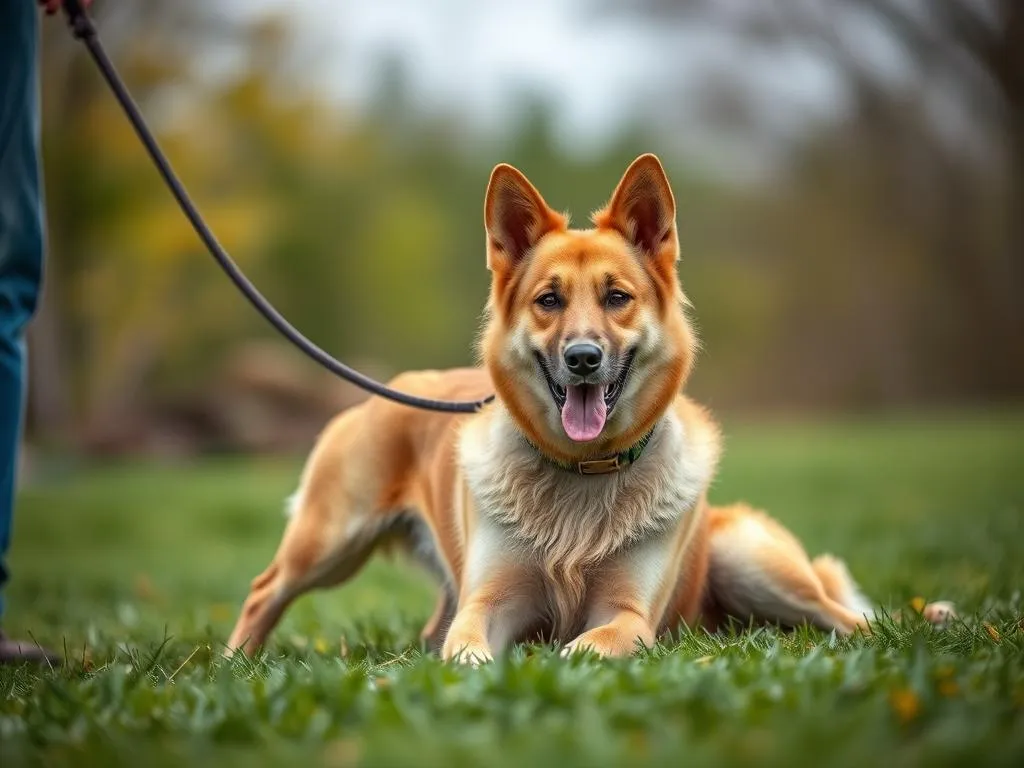
Dog training is an essential aspect of pet ownership, influencing not just behavior but also the overall wellbeing of both the dog and its owner. Did you know that approximately 90% of dog owners believe that training positively impacts their dog’s behavior? This statistic highlights the importance of understanding the various types of specialized dog training available today. Specialized training goes beyond basic obedience; it tailors the learning experience to meet specific needs, whether for service, therapy, or even competitive sports.
What is Specialized Dog Training?
Specialized dog training refers to tailored training programs designed to equip dogs with specific skills and behaviors suited to particular roles or environments. Unlike general obedience training, which focuses on commands like sit, stay, and come, specialized training addresses the unique needs of working dogs, therapy dogs, and many others.
The importance of specialized training cannot be overstated. For dogs, it can lead to improved behavior and socialization, while for owners, it enhances safety, strengthens the bond with their pet, and opens avenues for new experiences. Owners of dogs with specific roles—like service or therapy dogs—often seek specialized training to ensure their pets are well-equipped to handle the demands of their jobs.
Types of Specialized Dog Training
Service Dog Training
Service dogs are trained to perform specific tasks that assist individuals with disabilities. Their roles can vary widely, from guiding visually impaired individuals to alerting those with hearing impairments. The types of service dogs include:
- Guide Dogs: Assist visually impaired individuals in navigation.
- Hearing Dogs: Alert deaf individuals to important sounds.
- Mobility Assistance Dogs: Help individuals with physical disabilities navigate their environment.
The training process for service dogs is rigorous and involves several key steps. Initially, dogs undergo basic obedience training. This is followed by task-specific training, where they learn skills tailored to their owner’s needs. Certification processes vary by region but often require passing a series of tests to ensure the dog can perform their duties reliably.
Therapy Dog Training
Therapy dogs play a vital role in therapeutic settings, providing comfort and support to individuals in hospitals, schools, and nursing homes. Unlike service dogs, therapy dogs do not perform specific tasks for individuals with disabilities; instead, they offer emotional support and companionship.
Common uses of therapy dogs include:
- Hospital Visits: Assisting patients’ recovery by providing comfort.
- School Programs: Helping children with reading or emotional challenges.
- Nursing Homes: Providing companionship to the elderly.
Training techniques for therapy dogs focus on socialization, temperament assessment, and obedience. Dogs must demonstrate calm behavior in various environments and interact positively with people. Certification often involves passing an evaluation by a recognized organization.
Search and Rescue Dog Training
Search and rescue (SAR) dogs are invaluable in disaster response and recovery operations. They are trained to locate missing persons in various environments, including urban, wilderness, and water rescue.
Different types of search and rescue operations include:
- Urban Search and Rescue (USAR): Focuses on locating individuals in collapsed structures.
- Wilderness Search and Rescue: Involves searching remote areas for lost or injured individuals.
- Water Rescue: Specialized training for locating individuals in aquatic environments.
The training methods for SAR dogs are intensive. Dogs learn scent discrimination, tracking, and the ability to work cooperatively with handlers. This type of specialized training requires a significant time commitment and is often conducted in real-world scenarios to ensure dogs are prepared for actual emergencies.
Detection Dog Training
Detection dogs are trained to identify specific scents, making them essential in various fields, including law enforcement and security. Types of detection work include:
- Narcotics Detection: Locating illegal drugs.
- Explosives Detection: Identifying explosive materials.
- Customs and Border Control: Detecting contraband at borders.
Training techniques for detection dogs often employ scent training methods, where dogs learn to recognize and differentiate various smells. The bond between the handler and the dog is crucial; a strong relationship enhances the dog’s performance and reliability in the field.
Detection dogs are commonly used in airports, border control, and police operations, where their ability to quickly identify threats can save lives.
Agility Training
Agility training focuses on enhancing a dog’s physical abilities and coordination through a series of obstacles and challenges. This type of training is not only fun but also helps improve a dog’s fitness and mental sharpness.
Common components of agility training include:
- Jumps: Various heights and distances to challenge the dog.
- Tunnels: Enhancing a dog’s confidence and speed.
- Weave Poles: Improving coordination and agility.
Agility competitions are popular and offer a platform for dogs and their owners to showcase their skills. The benefits of agility training extend beyond competition; it fosters a strong bond between the dog and owner, promotes physical exercise, and enhances obedience.
Behavioral Modification Training
Behavioral modification training is essential for addressing specific issues such as anxiety, aggression, or phobias. Many dogs experience behavioral problems that can be mitigated through specialized training.
Common behavioral issues include:
- Separation Anxiety: Dogs displaying distress when left alone.
- Aggression: Dogs that exhibit aggressive behavior towards people or other animals.
- Fear-Based Behaviors: Dogs that react negatively to certain stimuli, such as loud noises.
Training approaches for behavioral modification often involve techniques like positive reinforcement, desensitization, and counter-conditioning. These methods emphasize rewarding desired behaviors while gradually exposing the dog to their fears in a controlled manner.
Choosing the Right Specialized Training
Identifying the right specialized training for your dog starts with assessing their individual needs. Consider your dog’s behavior, temperament, and any specific challenges they face. This evaluation will guide you in selecting the most beneficial training program.
When looking for a qualified trainer, it’s important to consider their credentials, experience, and training philosophy. Look for trainers who utilize positive reinforcement and humane training practices, as these methods are more effective and foster a better relationship between the dog and owner.
The Role of Owners in Specialized Training
Owners play a crucial role in the success of specialized training programs. Commitment and consistency are vital; regular practice solidifies the skills learned during training sessions. Understanding dog behavior is equally important; recognizing canine body language and emotional cues will enhance communication between you and your pet.
Specialized training also serves as an opportunity to strengthen the bond between the dog and owner. Engaging in training activities fosters trust and mutual respect, creating a stronger relationship that benefits both parties.
Conclusion
Understanding the types of specialized dog training can greatly enhance your experience as a dog owner. From service and therapy dogs to search and rescue and detection work, specialized training equips dogs with skills tailored to their roles. Furthermore, agility and behavioral modification training can address specific needs and improve overall behavior.
As you consider the benefits of specialized training, think about your dog’s unique needs and how tailored training can enrich your lives together. Whether you choose to pursue training for practical purposes or simply to strengthen your bond, specialized dog training offers a pathway to a more fulfilling relationship with your furry friend.









